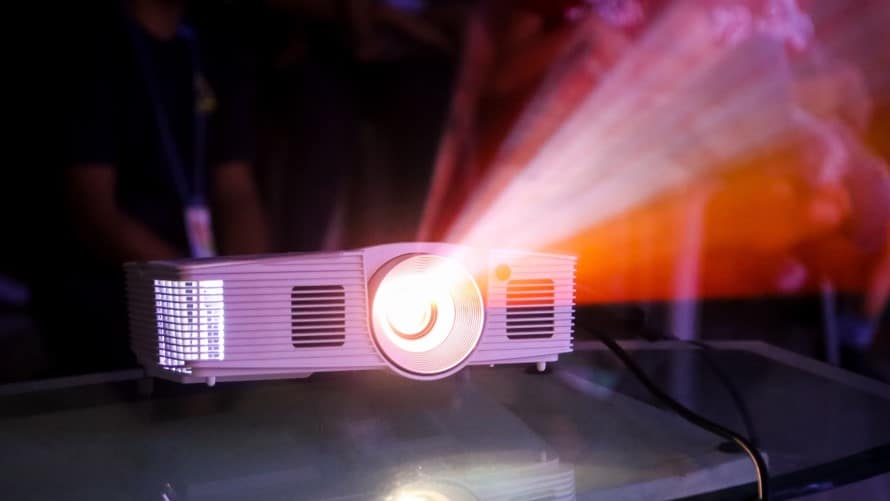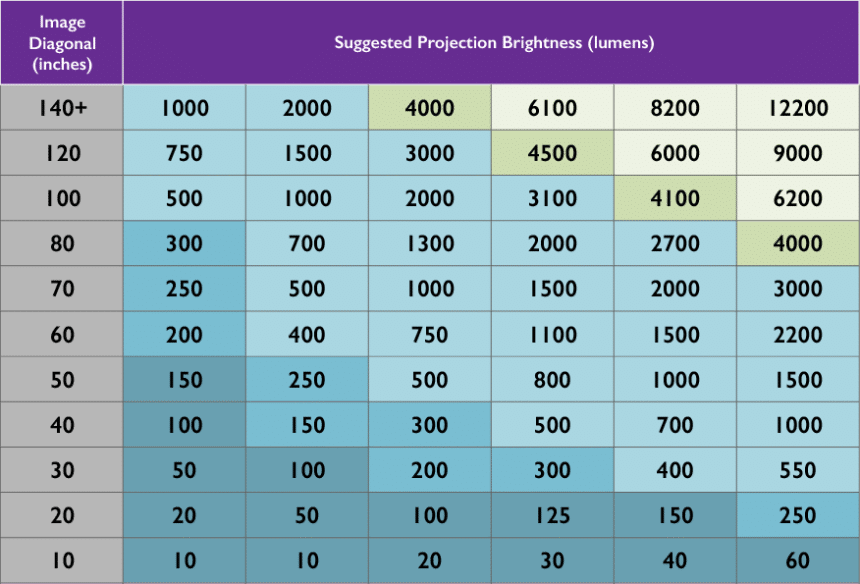When shopping for a projector you will often meet a certain number of lumens in parameters. You might even notice that projectors with higher lumens number often feature a higher price. It’s not a coincidence, of course, for you need to consider how your future projector will perform and lumens can give you a clearer picture on the subject. In both meanings.
The lumen is often explained in terms of the amount of light radiation from a light source. It also describes the brightness level of a light source from a viewer’s perspective. Since there are different projectors on the market, each will have a different projector lumen count. This discussion centers on this vital topic for anyone dealing with projectors for personal or professional use. So let’s dive deeper into the subject to give you full information on importance of lumens in a projector.

For outside entertainment, you should consider the higher number of projector lumens. Projector screen reflects all the light sources that are directed at it, including outdoor artificial and natural lights. So even with a decent projector that work perfectly fine at home, you’ll get a distorted and pale picture.
But these are not all the factor that influence the clarity of the picture, you can easily improve your projector using experience after watching this video:
An indoor projector with the screen in the right place will use less light intensity to display an image compared to an outdoor projector. This is because of the difference in the amount of ambient light. For an indoor projector, the number of lumens will range between 2000 and 3500 for a bright image when there is moderate ambient light.
When determining the best projector for an indoor event, ambient light is an important aspect you must maintain. It refers to the natural light that gets into a room through doors, windows or other openings. This ambient light affects the lighting dynamics of a room, which can interfere with the projector brightness. In essence, the amount of lighting in the room influences lumen specifications on an indoor projector. If a room has controlled lighting, like in movie theaters, an indoor projector with few lumen quantities and better resolution is required.
Short-throw is one projector element that influences the quality of an image for indoor projectors. It describes the distance from a projector and a screen between 3 and 8 feet. A short-throw projector is ideal for smaller areas to accommodate the shorter distances without distorting images. In an indoor event such as home theater, a 1500 lumens projector is enough to display a quality image on the screen due to a short-throw. This could not be the case with an outdoor event when the distance is long.
Resolution is another essential consideration to project images for different purposes accurately. The projector should have the correct resolution that matches with the image brightness. The resolution can be based on the screen size used for the projector. You can determine screen size by measuring diagonally from the upper right corner to the lower-left corner.
 Movie viewing
Movie viewingProjectors are widely used in movie theaters by displaying the image on a large screen. You need to use a projector with the highest resolution and appropriate lumens for a fantastic movie experience. A 4K UHD resolution is required for home theater viewing for high-density images. The resolution plays a crucial role in the whole watching experience based on its display of colors and contrast in images.
Simultaneously, watching movies in a completely blacked-out room will demand up to 2000 of projection brightness. With a 4K UHD resolution, the 2000 lumens projector will display clear images regardless of the screen size. If the room allows some ambient light, then a higher lumens projector will offer the best results.
According to user reviews, the Optoma HD146X is a great projector for watching UHD movies. This is a UHD 4K resolution projector that will display the most explicit image on a screen. It is mostly used in home theaters providing high-definition photos and clear image alignment with this projector. The projector is designed with a gaming mode for an even better experience.
Projector lumens are crucial when playing games to ensure a clear display of images. The gaming experience on a projector will depend on several factors, including the resolution and lumen quantity.
When using a projector for gaming, ensure you use one built with 1080p resolution, minimum lag time, and a refresh rate of 120Hz.
Simultaneously, the gaming projectors are efficient for gaming since they are built to reflect ambient light. If you are using a projector for gaming in the dark, go for a 3D projector with more than 1000 lumens to enjoy a great gaming experience. According to most reviews, the sturdiest model for gaming is the Optoma GT1080HRD. The product comes with a short-throw lens, allowing you to place the game closer to the screen. This gaming projector works better in rooms with little or no ambient light, which means you can’t use it in the outdoors. Also, the product is perfect for a gaming experience due to the in-built gaming mode.
Video presentation using a projector relies on various factors, including resolution, lumen, and ambient light availability. Video projectors are the best when presenting in a closed room because of a clear image. A portable laser projector is preferred over LEDs and lamp projectors when presenting in enclosed spaces because lasers create clear pictures on the big screen.
On the market, the best projector for presentation is those with 840 by 480 resolutions. This resolution is the best for the 4k projector presenting in a closed room. A projector lumen of 2500 will be sufficient for project presentation when a room has minimum ambient light. Such a projector will not function well in outdoors with more ambient light despite the lasers unless there are more lumens.

For example, in an outdoor event, sunsets can equal 4,000 lumens, while a sunny day will have as much as 10,000 lumens because of the brightness. Hence, the projector for sunset events should have more than 4,000 lumens.
You need a specific projector to make an outdoor cinema better. According to most reviews, the QKK Mini Projector is one of the most reliable options for outdoors. The projector is ideal for home entertainment with a high resolution and flexible connectivity. It is the best choice for any outdoor camps, trips and night movies with your family. The LED light source can protect your eyes when viewing while ensuring clear images.
Simultaneously, a daylight projector has to be clear than an indoor projector with a higher lumen capacity. The idea is to have more lumens to neutralize outdoor events’ ambient lighting and display clear images. A bright projector can show a clear picture even when placed away from the screen due to light intensity.
Lumens in a projector should be on top of the list of necessary parameters for your device. High-quality picture always depends on number of lumens your projector can produce. Consider different lighting and space conditions, both inside and outside, and purpose for which you’ll buy the device.
For your convenience you can check most popular projector models we’ve mentioned throughout the article and compare them to understand the difference for yourself. You can also check the perfect place to hang your projector screen in for true entertainment. Keep in mind the resolution for future use and choosing the projector won’t be an issue.
Now you know how projector lumens can influence the whole experience in using modern projectors for you and your family.





